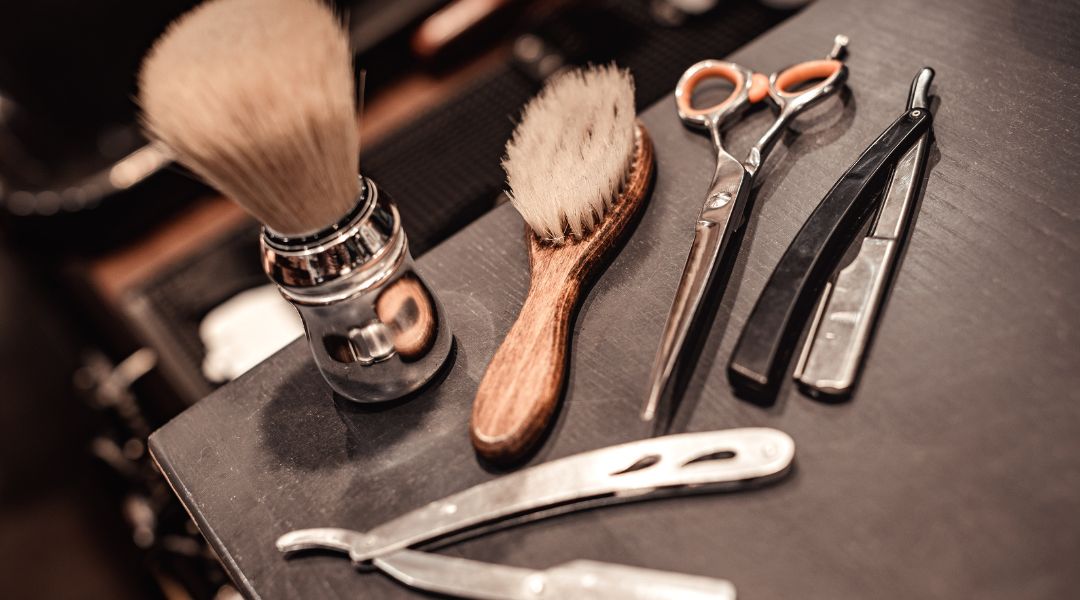You’re interested in pursuing a career in barbering, aiming to become a skilled barber. Texas might be the ideal place to start your journey! This brief guide will navigate you through the steps to become a licensed barber here.
From education requirements and apprenticeship programs to examination procedures for licensing, we’ve got it all covered. Embark on this exciting journey with us into the world of professional hairstyling today!
Researching Barber Licensing Requirements in Texas
As you embark on your journey to becoming a barber in Texas, understanding the licensing requirements is crucial. Chapter 82 of the Texas state law book outlines the guidelines for obtaining these licenses. If you’re transitioning from another state, there’s a specific process named ‘reciprocity’ which allows for the transfer of licensure to this new territory.
Remember that shop permits apply only to certain locations and aren’t transferable if moving premises or upon purchasing an existing barbershop. Acquiring a fresh permit would be necessary under such circumstances. In contrast with other industries, age does play into account when applying for this license; hence one must be at least sixteen years old before proceeding.
For cosmetology operators intending to transition towards barbering services using their already acquired credentials, it’s notable that options exist: Completing fast-track programs (where available) and passing requisite exams can earn them Class A Barber certificates too! However, they should maintain both Cosmetology Operator/Instructor and newly initiated Class A Barber licenses, especially if salon operations don’t stop. Lastly, note that once licensed as an instructor hereabouts, working concurrently across salons/shops alongside teaching wouldn’t raise eyebrows.
Gaining Practical Experience as a Barber
In Texas, you cannot bypass this step before becoming licensed. This practical phase involves not just book learning but actual haircutting under supervision.
Once in school, start honing your skills by practicing on mannequins and, later on, real customers, all still being overseen by instructors or experienced barbers for safety reasons. Services may include cutting hair with scissors or clippers, facial shaves, and trims. Besides nearby residents providing their heads as canvases, friends, family members, and even fellow students make great first clients!
But remember that compensation at this stage isn’t allowed since one’s license hasn’t been obtained yet.
Apprenticeships are a great way to gain the skills necessary to become a barber. Working alongside experienced professionals, you can learn different techniques and popular hairstyles that can come in handy when taking your state exam. Having valuable know-how and insights like these will help you succeed in passing the test.
Thus, equip yourself well practically while undergoing education because it’s vital in understanding better what works best when managing diverse clientele expectations ultimately!
Meeting Education and Training Requirements
To meet the educational and training prerequisites, you must complete a Texas barber program that offers 1,500 hours of study. Engaging in this rigorous curriculum allows you to master hair-cutting, styling, and beard-trimming techniques effectively. Besides theoretical knowledge of these aspects, hands-on practical experience is crucial.
Firstly, get your Barber Student Permit Application approved by sending it to the TDLR (Texas Department of Licensing and Regulation). Upon receiving this permit status as active from them, you can provide access for enrollment into any recognized barbering program. The professional learning era will help imbibe essential skills needed in daily operations once licensed.
Testing theory and practical understanding formulate the next step toward achieving your goal. PSI Services is the testing vendor chosen by the Texas Board to administer these licensing exams specific to barbershop professionals. Reading through the instructions offered via the ‘Barber Candidate Information Bulletin’ before registering for tests helps prepare better.
Taking the State Exam to Become Licensed
You must pass the state licensure exam to obtain your barber license. This is a crucial step in your journey toward becoming an accredited professional. Before sitting for this test, familiarize yourself with its two main components: written and practical.
The written part evaluates your theoretical knowledge of barbering practices and sanitation procedures. Resources such as practice exams can be valuable tools for preparation. For the practical portion, expect hands-on tasks relating to everyday duties inside a barbershop, such as hair cutting or shaving techniques.
These allow licensing officers to assess if you have mastered the necessary skills before taking on clients independently. Don’t take these tests lightly; make sure you study thoroughly beforehand so that confidence accompanies every one of your moves when it’s time for observation under scrutinizing eyes! Once complete and passed successfully, the next step is to apply directly through the Texas Department of Licensing and Regulation online system, ensuring all documents are submitted accurately.
Applying for Your Barbers License from TDLR
The next step involves applying for licensure from the Texas Department of Licensing and Regulation. Confirm that you meet all set qualifications before proceeding. Keep an eye out on TDLR’s communication channels so as not to miss any crucial announcements.
Their email updates will keep you abreast with recent regulations or changes. Being aware of these new developments can ease your application process substantially. Furthermore, remember that establishments are required by law to display Health and Safety Rules visibly, and alcohol is no longer considered an acceptable disinfectant.
Don’t forget signage requirements because every institution must have clear identification displaying its name. Lastly, regularly visit TDLR’s website, which frequently posts rule modifications and other key data, including shifts in equipment standards under Title 16, Chapter 83 rules section. The path toward becoming a certified barber might be complicated, but staying informed makes it simpler!

